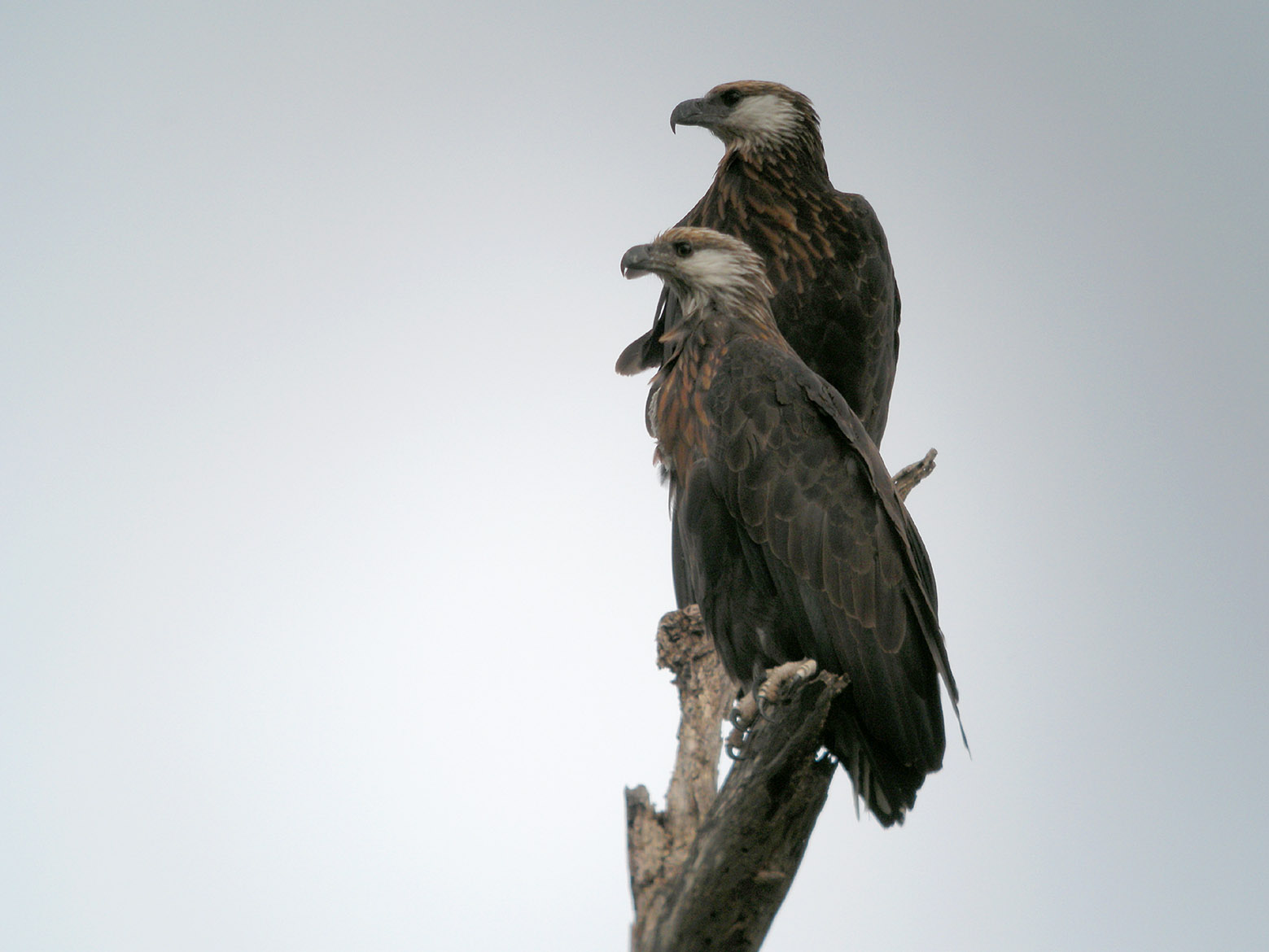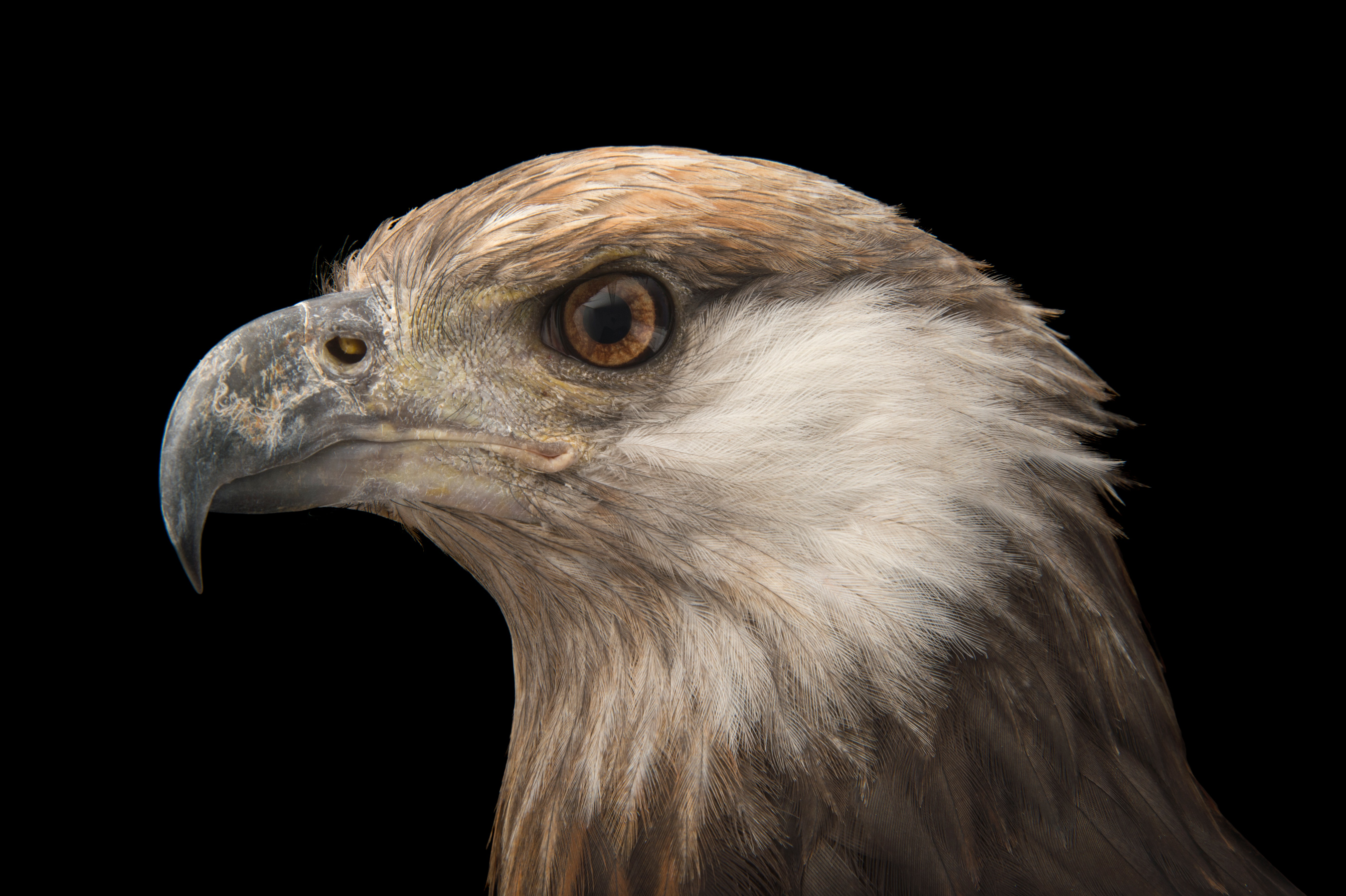
Here are the answers to the 10 questions about the Madagascar Fish-eagle (Haliaeetus vociferoides):
- What is the scientific name of the Madagascar Fish-eagle?
Haliaeetus vociferoides - Where is the Madagascar Fish-eagle primarily found?
It is found only in Madagascar, mostly along the western coastal regions and inland lakes. - What type of habitat does the Madagascar Fish-eagle prefer?
It prefers freshwater lakes, rivers, and coastal lagoons with tall trees nearby for nesting. - What is the diet of the Madagascar Fish-eagle?
Its diet mainly consists of fish, but it can also eat waterbirds, reptiles, and small mammals. - How does the Madagascar Fish-eagle hunt for its prey?
It hunts by soaring over water and swooping down to snatch fish from the surface with its sharp talons. - What are the main threats to the survival of the Madagascar Fish-eagle?
Habitat destruction, human disturbance, and pollution are the major threats. Also, being a rare species, its small population is vulnerable to stochastic events. - What is the conservation status of the Madagascar Fish-eagle according to the IUCN?
It is classified as Critically Endangered. - How does the Madagascar Fish-eagle’s breeding behavior contribute to its population dynamics?
It typically lays one or two eggs per breeding season, with high parental care but low reproductive rates, limiting population growth. - What role does the Madagascar Fish-eagle play in its ecosystem?
It is a top predator in its aquatic ecosystem, helping to control fish populations and indicating healthy water habitats. - What conservation efforts are currently in place to protect the Madagascar Fish-eagle?
Efforts include habitat protection, legal protection, research monitoring programs, and community awareness initiatives to reduce human disturbance.
Certainly! Here are some notable images of the Madagascar Fish-eagle (Haliaeetus vociferoides):




- In Flight at Ankarafantsika National Park
Photographed by Hugh Lansdown, this image captures the eagle soaring over the northwest coast of Madagascar. - Perched at Lake Ravelobe
This photo by Allan Hopkins shows the eagle perched on a tree branch at Lake Ravelobe, Ankarafantsika National Park. - Close-up Portrait
A striking portrait of the Madagascar Fish-eagle, highlighting its distinctive features. - Taking Off from Water
Captured by Inaki Relanzon, this image shows the eagle taking off from the water after a fishing attempt at Ravelobe Lake. - Juvenile at Lake Ravelobe
A photograph by Bryan J. Smith depicting a juvenile Madagascar Fish-eagle at Lake Ravelobe.
The Madagascar Fish-eagle (Haliaeetus vociferoides) is a rare and fascinating bird of prey endemic to Madagascar. Here are some key facts about it:
Description
- Appearance: It has a distinctive look with a white head and chest, dark brown wings, and a striking yellow beak and legs. It’s a medium to large eagle, with a wingspan of about 1.8 meters (6 feet).
- Size: Approximately 70-85 cm (28-33 inches) in length.
Habitat
- Found only in coastal areas and wetlands of Madagascar.
- Prefers large lakes, rivers, and mangrove swamps where it can hunt for fish.
Diet
- Primarily feeds on fish, but will also eat water birds and reptiles.
- Hunts by swooping down and snatching prey from the water with its powerful talons.
Conservation Status
- Critically endangered due to habitat loss, disturbance, and human activity.
- Estimated population is fewer than 200 mature individuals.
- Conservation efforts are ongoing to protect its habitat and breeding sites.
Behavior
- Solitary or found in pairs.
- Nests in tall trees near water.
- Known for its loud, distinctive calls.